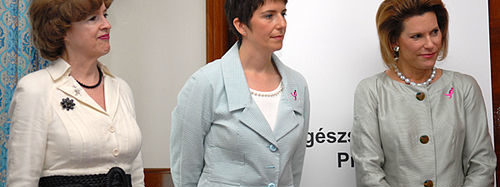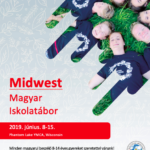The day of Hungarian culture is celebrated across the country on January 22. Ferenc Kölcsey finished his poem Himnusz 196 years ago today. Little did he know that his poem—one he didn’t even consider as his best work—would go on to become Hungary’s national anthem. Literary historian and writer Krisztián Nyáry recalled the adventurous and surprising story of the national anthem in an article published on valaszonline.hu.
The Hymn’s birthday is just the anniversary of the final version as according to Nyáry, Kölcsey began writing Hymnus in 1822. He was inspired by what he thought was a Balassi poem—although it later turned out to be János Rimay’s work— in which a national death was avoided by God’s grace. In his new poem, Kölcsey combined the traditions of peasant and kuruc songs and the 7+6 rhythmic formula of the Hungarian folk dance canon. When Kölcsey died on August 24, 1838, he did not anticipate that this piece would become a national anthem known by everyone. In fact, he has never once included the Himnusz among his best works.
Many believed the subtitle “From the stormy centuries of the Hungarian people” (A magyar nép zivataros századaiból) was added expressly to enable the poem to pass Habsburg censorship by emphasizing past national troubles rather than contemporary ones. However, according to Nyáry, Kölcsey published the poem in Károly Kisfaludy’s Aurora in December 1828 with the title Hymnus. So, it appears the poet did not write his poem with the subtitle in order to avoid censorship.
In 1843, Endre Bartay, director of the National Theater, suggested that Hungary needed its own national anthem. However, the Himnusz was not his first thought, and a competition was held to write music for Mihály Vörösmarty’s Szózat, won by Béni Egressy. A year later, another competition was held to write music for Kölcsey’s Himnusz. Ferenc Erkel participated in the competition and finished his music months before the official deadline; in fact, the final product was completed in only one hour. Nowadays, two manuscripts are known: the choral orchestra version for the 1844 competition and another quartet choral version completed much later in 1880.
The rhythm of the two pieces differs from one another and it is difficult to decide which is the “original.” Interestingly, neither of them is the same as today’s version as both have a faster pace. In 2013, the Hungarian Olympic Committee adopted a more bouncy version for use in sporting events. This version is far more similar to the original and has been performed by the MÁV Symphony Orchestra at the Olympic Games.
Himnusz and 1848
In 1848, it was already evident that the piece would be regularly played at revolutionary events, however, not always played first. On March 15th at the National Theater following József Katona’s Bánk Bán opera, the audience demanded the anthem be played fourth behind the Rákóczi March, the Marseillaise and others. But from the revolution on, Himnusz slowly became the national anthem of Hungary. Over time it became common practice to hear the piece at political events, public celebrations and end of school events. Yet, the Himnusz was never played in churches given the dogmatically questionable nature of this line: “This nation has suffered for all sins.”
It took 80 years for it to be suggested as the official national anthem of Hungary. However, some politicians (such as Károly Eötvös) had strong beliefs as to why Himnusz should not be the anthem. They argued that although the poem is beautiful, “the glorious song of the nation, the national anthem, should not be about complaints and lamentation.” At the end of World War I, Gotterhalte, the “Kaiserhymne” of the Austro-Hungarian Empire, was last heard in Hungary. After that, only Erkel’s work was played as a national anthem.
After the lost First World War
After the Trianon Treaty, Erkel’s original score changed to a slower, more tragic, verbunko rhythm. In 1938, Ernő Dohnányi produced a new orchestral version of this slower piece. A year later, the Minister of Culture issued a decree on how the anthem is meant to be performed, saying that “according to the prayerful nature of the anthem, it can only be given on serious occasions.” As a result, it was not permitted to be played at sporting events.
Communists wanted to replace it
During the communist regime, the music was mostly played without text, followed immediately by the Soviet anthem. There was an effort to change the anthem in Hungary as well and József Révai, Minister of Culture, wanted to entrust musician Zoltán Kodály and poet Gyula Illyés with the writing of a more optimistic and non-denominational national song. However, they all eventually agreed that Erkel and Kölcsey’s work should not be replaced and succeeded in convincing the leadership of the same.
Himnusz becomes the official national anthem, finally
At the dawn of the regime change on 23 October 1989, the anthem was again brought to the political decision-makers. On the basis of a governmental decision, the birthday of Himnusz (22 January) became the Day of Hungarian Culture. XXXI. tv 36. § states: “The Anthem of the Republic of Hungary is Ferenc Kölcsey’s Himnusz, with the music of Ferenc Erkel.” 166 years after Ferenc Kölcsey wrote the poem, it finally became the official national anthem.
The literal and the poetical translation of the first stanza, which is sung at official ceremonies:
Isten, áldd meg a magyart
Jó kedvvel, bőséggel,
Nyújts feléje védő kart,
Ha küzd ellenséggel;
Bal sors akit régen tép,
Hozz rá víg esztendőt,
Megbűnhődte már e nép
A múltat s jövendőt!
O, my God, the Magyar bless
With Thy plenty and good cheer!
With Thine aid his just cause press,
Where his foes to fight appear.
Fate, who for so long did’st frown,
Bring him happy times and ways;
Atoning sorrow hath weighed down
Sins of past and future days.
O God, bless the nation of Hungary
With your grace and bounty
Extend over it your guarding arm
During strife with its enemies
Long torn by ill fate
Bring upon it a time of relief
This nation has suffered for all sins
Of the past and of the future!
Article from 22.01.2019.
Source: Hungary Today



































Leave a Comment
Your email address will not be published. Required fields are marked with *